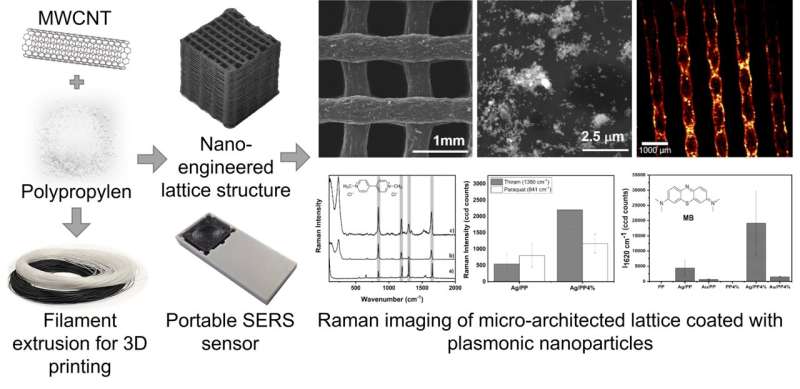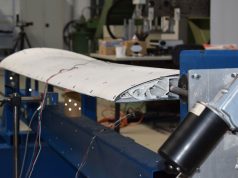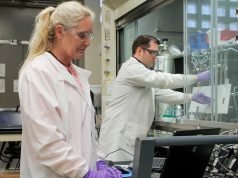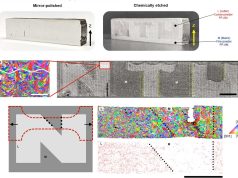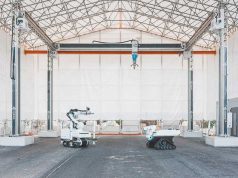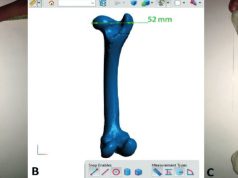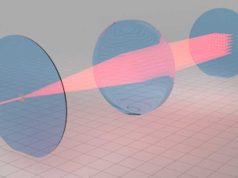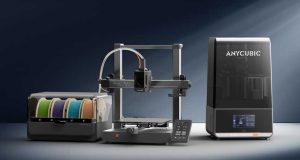A novel, low-cost 3D-printed sensor for measuring water pollution could cause a sensation in environmental monitoring, according to its developers.
Experts from Scotland, Portugal and Germany hope the device will revolutionize water monitoring.
Pesticides, used worldwide in agriculture, can cause significant damage to the environment if not handled properly. Regular monitoring of water is therefore of paramount importance. Traditional tests provide reliable results, but are expensive and time-consuming. Researchers have used an alternative method called surface-enhanced Raman scattering (SERS).
SERS identifies molecules by their unique “fingerprint” created by light scattering when light strikes them. By improving the metal surface that can adsorb molecules, the sensor’s detection capability can be increased.
To this end, they studied different types of cellular architectures made from blends of polypropylene and multi-walled carbon nanotubes. The architectures were fabricated using fused filament fabrication, a common type of 3D printing.
The surface of the cellular architectures was coated with silver and gold nanoparticles using a common wet chemical approach to enable the process of surface-enhanced Raman scattering.
They tested the ability of several different designs of the 3D-printed cellular materials to take up and adsorb molecules of an organic dye called methylene blue before analyzing them with a portable Raman spectrometer.
The material that performed best in these initial tests – a lattice pattern (periodic cellular architecture) combined with silver nanoparticles – was then added to test strips. Samples of seawater and freshwater spiked with small amounts of the real pesticides thiram and paraquat were dropped onto the test strips for SERS analysis.
The researchers found that the test strips were able to detect molecules of the two pesticides at concentrations as low as 1 micromolar – the equivalent of one molecule of pesticide to one million molecules of water.
Shanmugam Kuma said: “SERS is a valuable diagnostic technique with applications in a wide range of different fields. The sensor substrate material we’ve developed benefits from a an optimal combination of the nanocarbon-engineered architected lattice’s large surface area and the remarkable optical properties of the metallic nanoparticles. The interaction of the strong local electromagnetic field in the metallic nanoparticles and the carbonaceous material’s chemical mechanisms creates a highly active surface for SERS analysis. The results of this initial study are very encouraging, showing that these low-cost materials can be used to produce sensors for SERS detection of pesticides even at very low concentrations.”
Dr. Sara Fateixa of the CICECO Aveiro Institute of Materials at the University of Aveiro co-authored the study and developed the plasmonic nanoparticles that enable the SERS technique.
She said: “While this paper examines the potential of the system to detect specific types of water pollutants, the technique could easily be adapted to monitor the presence of a wide range of chemicals in samples. In farming, for example, the milk from cattle, who are recovering from an illness, which was treated with antibiotics can’t be sold until after the drug has left their systems. Currently, the tests which prove their milk is ready to go back on the market are expensive, but our diagnostic materials could be tuned to provide reliable results much more affordably. We’re looking forward to continuing to develop this very promising sensor material for use in SERS applications.”
Find out more about the University of Glasgow at gla.ac.uk.
Subscribe to our Newsletter
3DPResso is a weekly newsletter that links to the most exciting global stories from the 3D printing and additive manufacturing industry.



